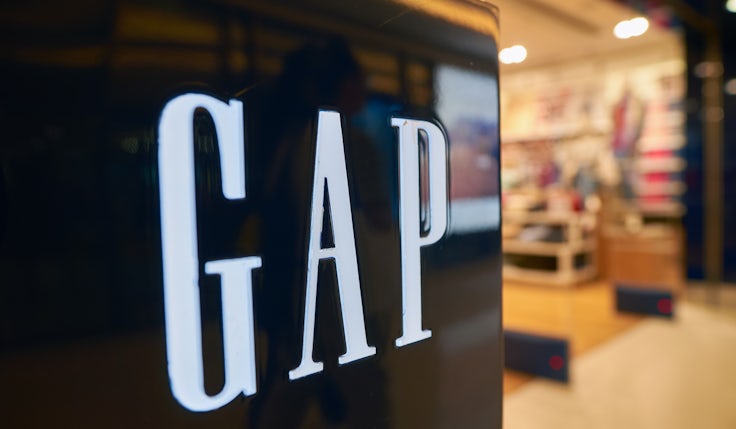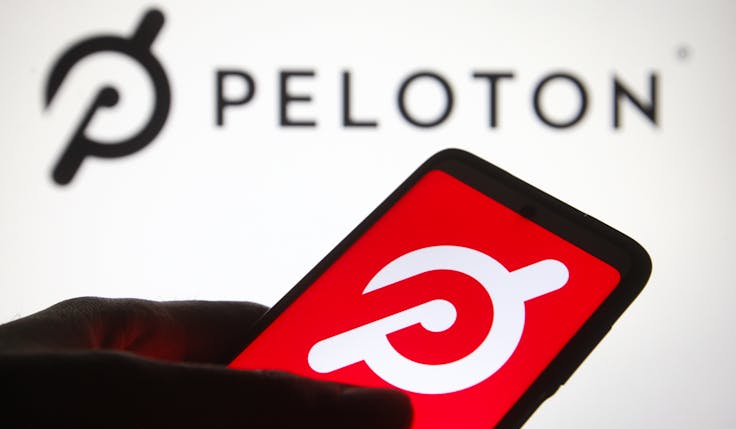Gap blames product mix ‘imbalances’ as it swings to loss
As Gap Inc looks to right size its business, it is planning to “reevaluate” its marketing and technology investments to better position itself for “long-term growth”.
 Gap Inc has blamed ‘category mix imbalances’ for the declining sales of its retail brands over the second quarter of its 2022 fiscal year, as the challenged business swung to a net loss of $49m (£41.4m).
Gap Inc has blamed ‘category mix imbalances’ for the declining sales of its retail brands over the second quarter of its 2022 fiscal year, as the challenged business swung to a net loss of $49m (£41.4m).
Revenue for the period fell 8% year-on-year to $3.86bn (£3.26bn), with online sales – representing 34% of total sales – down 6%, and store sales down 10%.
Gap Inc’s brands include its namesake Gap, as well as US retailers Old Navy, Banana Republic and Athleta. Gap in particular has struggled over the last decade, having fallen out of fashion with consumers as they looked to cheaper and trendier clothing stores.
The retailer closed all 81 of its UK branches last year, with Next later taking over Gap’s business in the UK and Ireland as a franchisee partner. The joint venture, owned 51% by Next and 49% by Gap, sees Next operating the fashion brand’s digital operations, concessions and click & collect service in the UK, while the US business continues to produce the brand’s clothing ranges.
The brand has experienced somewhat of a cultural resurgence in recent years, with models and celebrities once again donning Gap’s classic hoodies and sweatshirts from the 90s and 00s. In 2020, the retailer announced a collaboration with rapper Kanye West’s Yeezy brand on a line of clothing, which is now being made available in Gap’s bricks and mortar stores.
Nevertheless, Gap’s global sales in the quarter declined 10% versus last year to $881m (£744.2m). Global comparable sales were down 7%, and North America comparable sales were down 10%.
We firmly believe that marketing investments are a key contributor to brand health and customer acquisition.
Katrina O’Connell, Gap Inc
Speaking to investors yesterday evening (25 August), CFO Katrina O’Connell said the brand has “remained impacted by casual category softness”, particularly in mid-tops and casual shorts, while “more relevant categories”, such as dresses and trousers, showed “better results”.
“The team is focused on fixing the category mix imbalances in fall and holiday,” she said.
Old Navy faces a similar challenge. The retailer has been critical to the company’s success, accounting for more than half of global net sales in 2021. Indeed, in 2019 Gap announced plans to separate the brand into its own publicly traded entity. This plan was called off in 2020, however, amid softening performance and declining sales.
Old Navy’s sales declined 13% in Q2 compared to the same period last year, to $2.1bn ($1.78bn). Comparable sales were down 15%.
“The year-over-year declines at Old Navy stemmed from continued previously discussed size and assortment imbalances,” O’Connell explained.
Interim CEO Bobby Martin, who took on the role when former CEO Sonia Syngal abruptly stepped down in July, admitted these brands are “underperforming”, adding that the business is also being “tested” by the current macro-economic environment, as cost pressures rise and consumer behaviours shift.
“To change the trajectory of our business, we need to take action,” he said.
Elsewhere, Banana Republic’s sales grew 9% to $539m (£455.6m), while Athleta’s sales grew 1% to $344m (£290.8m). The business plans to open 30 to 40 Athleta stores and 20 to 30 Old Navy stores over the rest of the year, while closing 50 Gap and Banana Republic stores. This will bring it to around 85% of its goal of closing 350 stores in North America by the end of 2023.
Plans for marketing
As Gap Inc looks to right size its business, it is planning to “reevaluate” its marketing and technology investments to better position itself for “long-term growth”, O’Connell said. The business has already made “strategic investments in marketing to support its digital growth.
However, the firm is also looking to implement a reduction in overhead investments, which may impact marketing spend.
“We firmly believe that marketing investments are a key contributor to brand health and customer acquisition,” O’Connell said.
“But in light of the current operating environment, we are looking at specific opportunities to invest more prudently, focusing our spend on the most productive and highest return opportunities.”‘It’s a tremendous fall from grace’: What happened to Gap?
She added: “We also believe there’s an opportunity to slow down more meaningfully the pace of our technology and digital platform investments to better optimize our operating profits.”
Sales, general and administration expenses for the year full year are expected to total around $5.6bn (£4.7bn), which O’Connell says is “just too high”.
“In light of our performance and in light of the outlook, we are really committed…to putting in place real action against working that SG&A level down to a much more appropriate level,” she said.
CEO Martin added he is “realistic” about the “hard work” that lays ahead for Gap Inc, but remains confident about the future.
“We know what we need to deliver to our customers, and we know that it has to fully measure up. It has to be compelling. It has to be worth the trip every time,” he explained.
“I’m confident that our team has the capabilities needed to deliver what our customers and shareholders expect and what is needed for long-term profitable growth. And it will take an aligned focus on adopting organisational behaviours that will enable change and unleash our potential.”







Comments